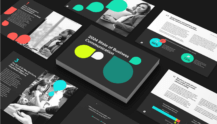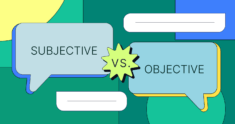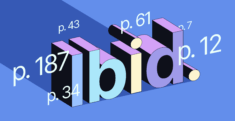
Think about your favorite literary character. We all have one. Maybe you have more than one.
What do you like about that character? Although every well-crafted literary character is unique, they have a few important things in common. These include motivation, nuance, and a compelling story arc. Here, we’ll explore the meaning of a character in a story, and what makes characters important in literature and other fictional and nonfictional accounts.
What is a literary character?
A literary character is a character who plays a role in a story’s narrative. Although they can be based on real people, characters are fictional (and sometimes fictionalized) figures created specifically for storytelling.
Character (pronounced keh-ruhk-tr) is one of the five elements that can be found in every story. The other four are:
- Plot
- Narrative
- Theme
- Conflict
This is true even for simple stories and stories you tell your friends when you’re recounting your day. If the story is just a retelling of an experience you had, you’re the sole character!
Characters in stories don’t necessarily have to be human. They can be animals, aliens, mythical creatures, inanimate objects, or abstract concepts. As long as a figure has individual characteristics and engages with the narrative somehow, they’re a character.
In literature, characters do more than progress a story’s plot. They cause (and develop) conflict, shape its narrative, and reveal its themes. This is a large part of why all five elements need to be present to tell a story: They intersect and amplify each other, immersing the reader in the story. Characters also entertain, educate, and in some stories, persuade readers.
Why are characters important?
Characters are important because they are the ones who “tell” stories, even when they aren’t narrating their stories. They’re people we root for, learn from, understand, and project our own understanding, hopes, wants, fears, and curiosity onto—there’s a reason why reading fiction is correlated with increased empathy. Characters in stories are often a way for readers to engage with experiences they would never have themselves.
Often, characters’ traits are revealed through how they handle conflict. The conflict in a story can be internal or external, and for readers, experiencing a character’s struggle through their unique perspective is what makes the character memorable. This is known as indirect characterization. Indirect characterization also occurs through a character’s dialogue and relationships with other characters. Direct characterization, describing characters through straightforward, literal language, is another tool authors use to reveal character traits.
Types of characters
Major characters
Protagonist
When you hear the phrase “main character,” the protagonist is usually the first character who comes to mind. In a story, the protagonist is the character the story is about. Their arc remains in focus throughout the story, and typically their choices, motivations, needs, and/or reactions to their circumstances drive the story’s plot.
Antagonist
Similarly, when you hear the word antagonist, you probably think of a story’s bad guy. This is only partially accurate. The character definition of antagonist is actually the opposition the protagonist faces. This could be another character, but it could also be the protagonist’s environment, social expectations, or a part of themselves. By definition, a story’s antagonist stands between the protagonist and their goals.
Minor characters
Minor characters fall into a range of categories and can be described in a variety of ways. For example, a story might have a deuteragonist, a character whose own arc overlaps with the protagonist’s but isn’t the focus of the story. A minor character could also be the protagonist’s (or antagonist’s) love interest, and their presence may drive part or all of the plot. These types of minor characters can fit one or more of the descriptions below:
Foil
When discussing characters in books, a foil is a character whose traits are opposite the protagonist’s. This notably different character serves to highlight the protagonist’s traits. One example of a foil is Adele Ratignolle in The Awakening.
Static
A static character is one who doesn’t change over the course of a story. This isn’t necessarily because they aren’t a well-written character—in many cases, minor characters don’t need to change and instead serve to interact with the protagonist or progress the plot.
Dynamic
In contrast, a dynamic character is one who changes and grows as a story’s plot progresses. Ideally, a story’s protagonist is a dynamic character, but this isn’t always the case. The antagonist and minor characters can be dynamic as well.
Flat
A flat character is one who doesn’t have a well-developed backstory, personality, or motivations. It is not the same as a static character, though a character can be both static and flat. When a main character is flat, they can feel two-dimensional and unsatisfying. However, flatness can be appropriate for a minor character, especially one who plays a small role in the story.
Round
A round character is the opposite of a flat character: They have a complex, well-rounded personality and motivations. Round characters, like dynamic characters, change over the course of their stories. While a character can be both, the difference between a dynamic character and a round one is that, while a dynamic character is defined by their change, a round character is more defined by their nuance.
Stock
Stock characters are archetypal characters with fixed but often predictable personality traits. Think of examples like the wise old sage or the bubbly best friend.
Archetypes of characters
Characters can fit into various archetypes. The sage, a character who seeks wisdom and serves as a guide for others, is one example, and the bubbly best friend who provides insight alongside comic relief may fit into the Jester archetype. Other character archetypes include:
- The hero, a confident, motivated character who is driven by something greater than themselves.
- The creator, a focused, willful character whose conviction drives them to create.
- The lover, a romantic character who follows their heart.
- The innocent, a naive, childlike character driven by good intentions.
- The magician, a powerful, sometimes arrogant character whose incredible skills drive their actions.
- The everyman, a relatable character in whom the reader can easily see themselves.
Literary character examples
- Winston Smith, the everyman protagonist in George Orwell’s 1984.
- Elphaba, the protagonist in Gregory Maguire’s Wicked and the antagonist in L. Frank Baum’s The Wonderful Wizard of Oz, in which she is known as the Wicked Witch of the West.
- Jung Dae-hyun, a supporting character and the husband of the protagonist in Cho Nam-joo’s Kim Ji-Young, Born 1982.
- Lindo Jong, one of the eight protagonists in Amy Tan’s The Joy Luck Club.
- Scout Finch, the narrator and protagonist in Harper Lee’s To Kill a Mockingbird.
- Count Olaf, the antagonist in Lemony Snicket’s A Series of Unfortunate Events series.
Literary character FAQs
What is a literary character?
A literary character is a fictional figure who engages with a story’s narrative and plot.
What are some examples of literary characters?
- Matilda from Roald Dahl’s Matilda
- Bilbo Baggins from J.R.R. Tolkien’s The Hobbit
- George W. Hurstwood in Theodore Dreiser’s Sister Carrie
What are the different kinds of literary characters?
Major characters include the protagonist and antagonist. Minor characters can fall into a variety of categories, such as foils or static, stock, dynamic, and round characters.






